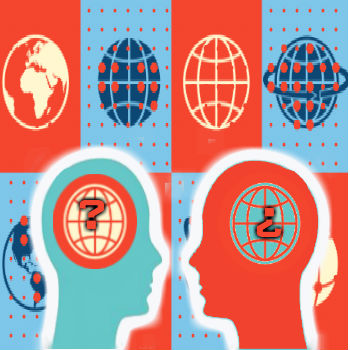Thinking Globally, Composing Locally.
An Interview with Kirk St. Amant & Rich Rice, by Gustav Verhulsdonck
Praxis: How has your thinking of these topics evolved since the publication of the special issue? What practical steps would you suggest researchers and teachers in writing studies take to explore or engage with these ideas and why?
"I have been thinking about hit the pavement issues; that is, the hard logistics of making things happen. I continue to explore integrating 'local-to-global,' problem-based service learning models in my teaching, research, and service. If we can make intercultural interaction more seamless for people who do not share the same cultural values, perhaps increased understanding of differences, and similarities, can result."
-Rich Rice

RICH:
In terms of my work at the university, I have been thinking about hit the pavement issues; that is, the hard logistics of making things happen. At my university we're undergoing a Quality Enhancement Plan that includes diversity, communication, and globalization. We're asked to include opportunities for students that enhance their education along these lines. I've been continuing to think through sustainable study abroad program models. At my school we now have a required study abroad in engineering as well as in architecture. I'm thinking through arguing that all arts and science majors should have a required study abroad experience. And I continue to explore integrating "local-to-global," problem-based service learning models in my teaching, research, and service, such as working with the Lubbock English Language Service Center. We're working to expand intercultural communication in various ways in both undergraduate and graduate curricula, making connections between intercultural communication and grant writing projects, and developing a world perspective in our rhetorical history course offerings.
"How can I relate effective practices of teaching within international contexts? What other differences am I failing to see in terms of writing transfer, workplace preparation, or cultural dimension differences and similarities? What do our students really need to know in order to be interculturally competent?"

I would like to continue developing models of exchange using mobile technologies. If we can make intercultural interaction more seamless for people who do not share the same cultural values, perhaps increased understanding of differences, and similarities, can result. When I head to dinner at a local restaurant I want to be able to connect with a colleague in India or China who may be sitting down for breakfast the next day, and share our meals and conversation. When I see something unique while en route to work, such as a few birds sitting on the back of a cow, I'd like to be able to share that with friends through Wechat or Whatsapp or some other tool, and in turn experience something through their eyes that they find particularly interesting.
I would like to continue to work on making sense of ethical situations related to teaching, sharing, and researching that I routinely find myself in. For instance, in different cultures the numbers of students directly impact every aspect of life, including educational and pedagogical approaches, in readily apparent ways. In a classroom of 20 to 25 students we can do some things that a classroom of 60 students may not be able to do in the same way. My first inclination is to relate examples drawn from my philosophy of teaching, like post-process teaching approaches. But are such techniques sustainable for teachers who routinely teach many more students than I do? How can I relate effective practices of teaching within international contexts? What other differences am I failing to see in terms of writing transfer, workplace preparation, or cultural dimension differences and similarities?
Related to all of these is intercultural communication competence. I spend a lot of time studying the values rubrics through the Association of American Colleges & Universities (AACU). They include information regarding civic engagement, creative thinking, critical thinking, ethical reasoning, information literacy, inquiry and analysis, integrative learning, foundations and skills for lifelong learning, oral communication, problem solving, quantitative literacy, reading, teamwork, and written communication. Two additional value rubrics focus specifically on competencies related to the 3Cs: global learning, and intercultural knowledge and competence. What do our students really need to know in order to be interculturally competent?
Top of Page Future Work
—webtext & interview by Gustav Verhulsdonck 2017
